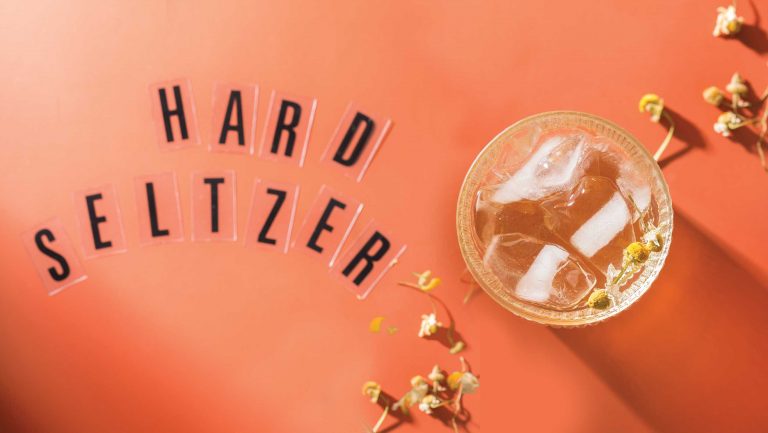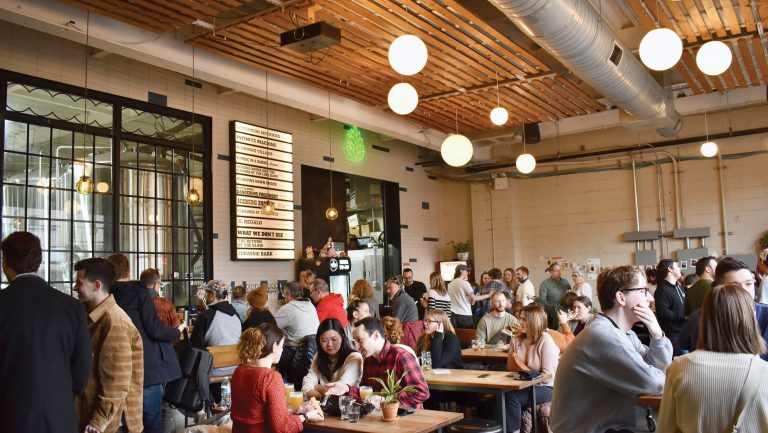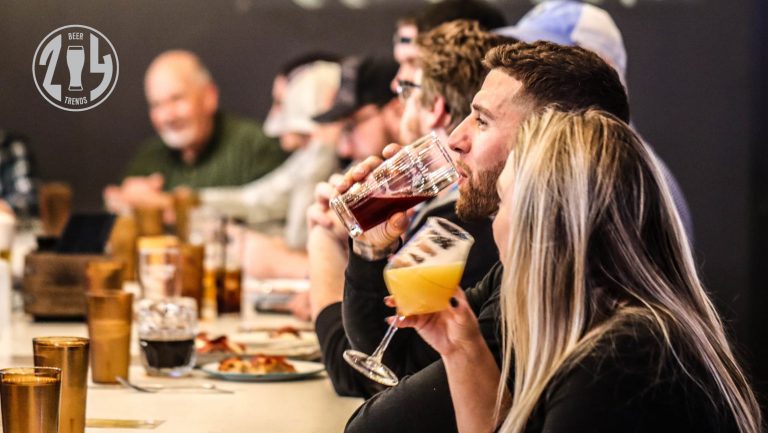The American beer industry is far enough along its modern path that some things have become new mainstays: Drinkers love hops, have a greater preference for visiting breweries, and—from time to time—don’t mind standing in line to buy something special.
Black Friday—long lines are not strange for taprooms, which have seen committed beer drinkers showing up hours early to sit or stand in snaking queues for the latest and greatest in funky or hoppy concoctions. Some breweries have built businesses on such a model, with hundreds of enthusiasts showing up regularly, from Massachusetts’ Trillium Brewing Company to California’s Monkish Brewing Co. Perhaps it was inevitable, then, that some of the bigger breweries in the country would start down this route, too.
“We’ve always been a direct-to-consumer brewery, with a shop to buy our beer, but we’re not going to ignore this new part of the industry,” says James Gentile, director of brewery operations for Pennsylvania’s Victory Brewing Company, which ships to 35 states and Washington, D.C., and produced nearly 140,000 barrels in 2016. “Why not give it a shot with something special?”

Don’t miss the latest drinks industry news and insights. Sign up for our award-winning newsletters and get insider intel, resources, and trends delivered to your inbox every week.
Like many other brewpubs, Victory offers one-off and specialty beers in its taprooms, but in February it took the process a step further with its Tank to Table series, in which IPAs and other hop-focused beers are released roughly every other month. The first release featured 50 cases of a double IPA, made exclusively with Cashmere hops, sold in person at three Victory retail locations. With no trouble selling out on a wintry Saturday, Victory doubled the number of cases to 100 for April’s release, a single-hop IPA made with Idaho 7 hops. On both occasions, Gentile said customers started showing up between 8 and 9 am to wait for the beers, which didn’t go on sale until 11 am and sold for $4 per 16-ounce can, $16 per four-pack. The first release sold out within hours. The second, doubled in size, lasted a full day.
That package format, Gentile noted, was deliberate. If you look at some of the most-hyped releases around the country, they’re nearly always in cans holding 16 ounces. According to numbers tracked by the Beer Institute, an industry lobbying organization that represents American breweries, 16-ounce cans showed the most growth from 2015 to 2016 among four traditional single-serve packages, in terms of barrels sold:
- 22-to-26-ounce bottles (-3.7 percent)
- 11-to-12-ounce bottles (-1.5 percent)
- 12-ounce cans (+.8 percent)
- 16-ounce cans (+2.2 percent)
“There was a time when customers wanted 22-ounce bottles, and that’s completely going away,” says Gentile. “Sixteen-ounce cans is where the market is going. It just seems to be what the customers want these days.”
Victory’s Tank to Table series checks the desired boxes: an in-person experience buying a popular package size of a style of beer canned and sold within three or four days of finishing fermentation—the perfect timeline to get fresh, hoppy flavor. Another step adds an additional layer—Victory creates surveys for each release, allowing customers to provide direct feedback rather than entering ratings and 140-character opinions on apps and social media.
This year, Maryland’s Flying Dog Brewery also changed the focus of a longtime brewery-only release schedule with its decision to package its Sub Rosa collection of beers in 16-ounce cans for seven scheduled releases over the course of 2017. While the collection of beers includes such eclectic IPAs as a Negroni IPA and a Mustard IPA, Flying Dog will also be releasing Apricot Sour and Smoked Sour Wheat. The brewery kicked off the yearlong project with Dark and Stormy Ale, a beer inspired by the cocktail of the same name.
Sub Rosa releases started two years ago as draft-only options, but Flying Dog has switched things up as a way to capitalize on direct-sales trends in the same way that Victory saw an opportunity.
“There’s a hype and mystique around these kinds of releases that makes people feel like they need to come out and get it,” says Flying Dog brewmaster Ben Clark. “It’s cool that we have creative freedom to do whatever we want with these beers, but it’s always nice to walk through the tasting room and see a line out the door waiting for them.”
Sales of other easily portable packages—glass growlers or 32-ounce aluminum crowlers—have been the norm for Flying Dog for years. But the ability to sell limited four-packs of 16-ounce cans ($12 each pack) in-house makes for another way to connect with fans and allows brewers to play, to create small batches of unique beers that not only push brewers’ skills but draw crowds interested in the brewery’s experiments. The Dark and Stormy Ale release, for example, allowed staff to use black currant juice; the Negroni IPA release included beets. The upcoming Mustard IPA will incorporate ground brown and yellow mustard seeds.
These bigger breweries are in a fortunate position: They can use their research and development sides as a way to keep pace with the smaller, nimbler breweries to which drinkers are becoming more accustomed.
“If anything, it allows us a little more flexibility and freedom to take risks and chances,” says Clark. “Being able to do these kinds of releases allows us to add more tools to our toolbox and adds knowledge for future production batches.”

Dispatch
Sign up for our award-winning newsletter
Don’t miss the latest drinks industry news and insights—delivered to your inbox every week.
Bryan Roth is an award-winning journalist and the director of the North American Guild of Beer Writers. He’s written for All About Beer, Beer Advocate, Good Beer Hunting, and other beer industry publications. Find him tweeting about beer at @bryandroth.







